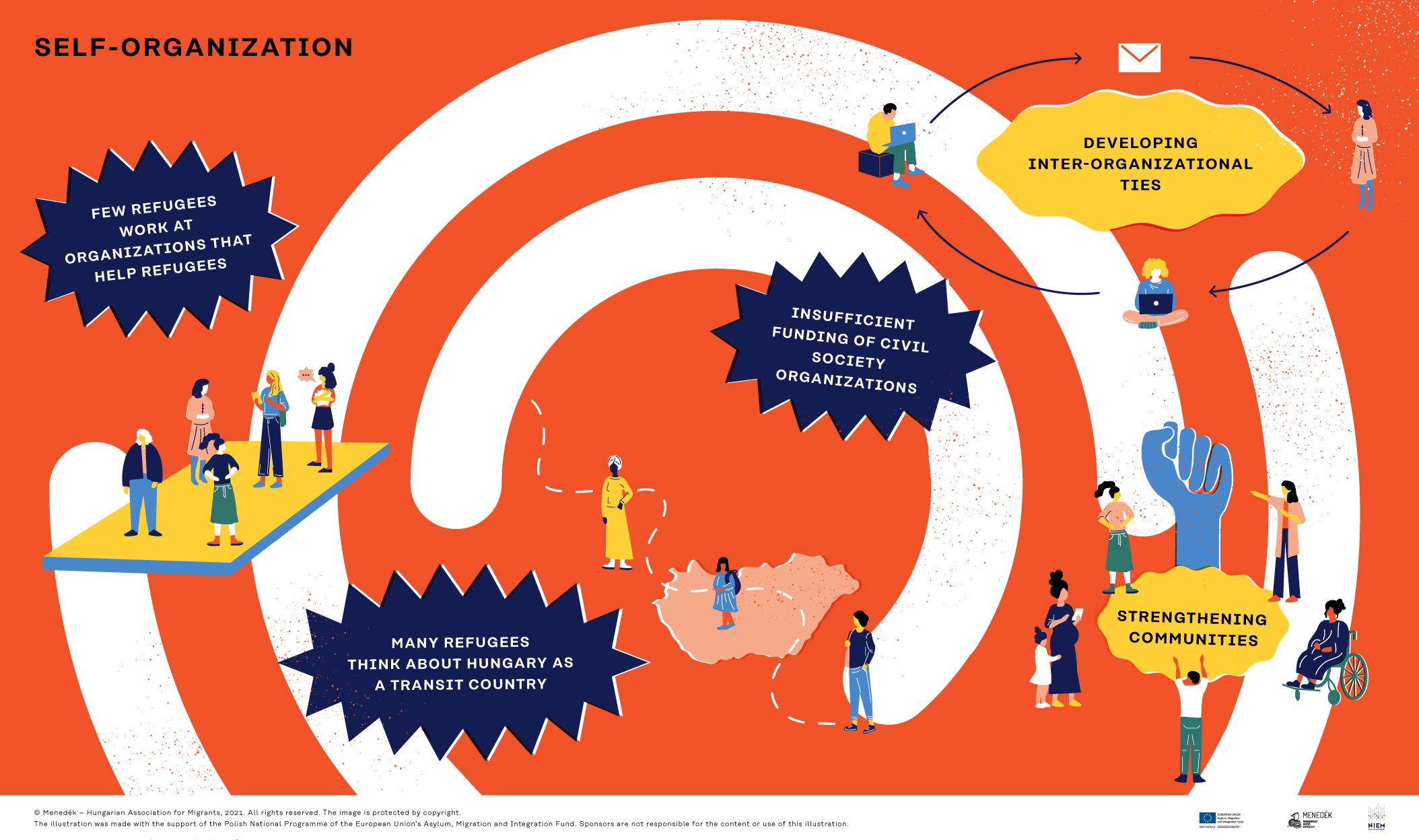
NIEM’s indicators, which focus on “building bridges,” that is, the relationship between beneficiaries of international protection or other immigrant backgrounds and local society, focus primarily on national, institution-building processes. As in Hungary, at the governmental level, these processes are often difficult to reconcile with the objectives of the European Union, the role of local initiatives and grassroots non-governmental organizations is particularly important.
The Migration Strategy 2014–2020, linked to the European Union's Asylum, Migration and Integration Fund (AMIF), emphasized the importance of civil society organizations and the need for interest groups of beneficiaries of international protection to be involved in decision-making. One of the objectives was to set up an Integration Forum where these groups could also express their views. However, this forum was never established, in fact, in 2018, the Hungarian state blocked state and EU funds related to refugee assistance from NGOs.
A significant part of the organizations that help refugees are made up of members of the majority society. In addition to the non-governmental organizations that have dealt with the topic before (eg Menedék Association), new refugee help movements (MigSzol, Migration Aid) emerged in the wake of the 2015 refugee crisis, some of which became formal organizations and some continued to operate as informal groups. In addition, actors in the field of refugee assistance who have not previously or no less dealt with this have entered the field of refugee assistance: the education program of the Central European University and several ecclesiastical or affiliated organizations are worth mentioning.
Immigrant-founded organizations were last examined in a 2008 and 2012 survey, which found that the number of such associations was around 150. In Budapest, the largest group was made up of organizations consisting of ethnic Hungarians from neighboring countries. In the whole country, organizations from East Asian and Middle Eastern communities accounted for the largest group. Their characteristic profile was cultural and religious, and the social and legal protection function was less significant. It can be assumed that this general finding is still correct. The Next Step Association is the largest of the organizations set up by refugees and is active in social and legal matters.
A significant part of the beneficiaries of international protection think of Hungary as a transit country, which also has a significant impact on participation: on the one hand, it is a small population, and on the other hand, the energy and risks of self-organization do not necessarily pay off. This is why organizations with a purely or largely refugee background are very rare.
At the same time, civic participation is very useful for social integration, so an integrative asylum and migration policy could aim to launch integration programs and involve local authorities and non-governmental organizations. At the local level, it would be important to strengthen refugee communities through organizational and community development tools, and to launch educational programs that connect refugee groups and vulnerable groups in the majority society, such as university students. Providing refugees with opportunities for volunteering and internships, as well as facilitating contact between organizations with different majority and immigrant backgrounds, could help individual and community integration.
